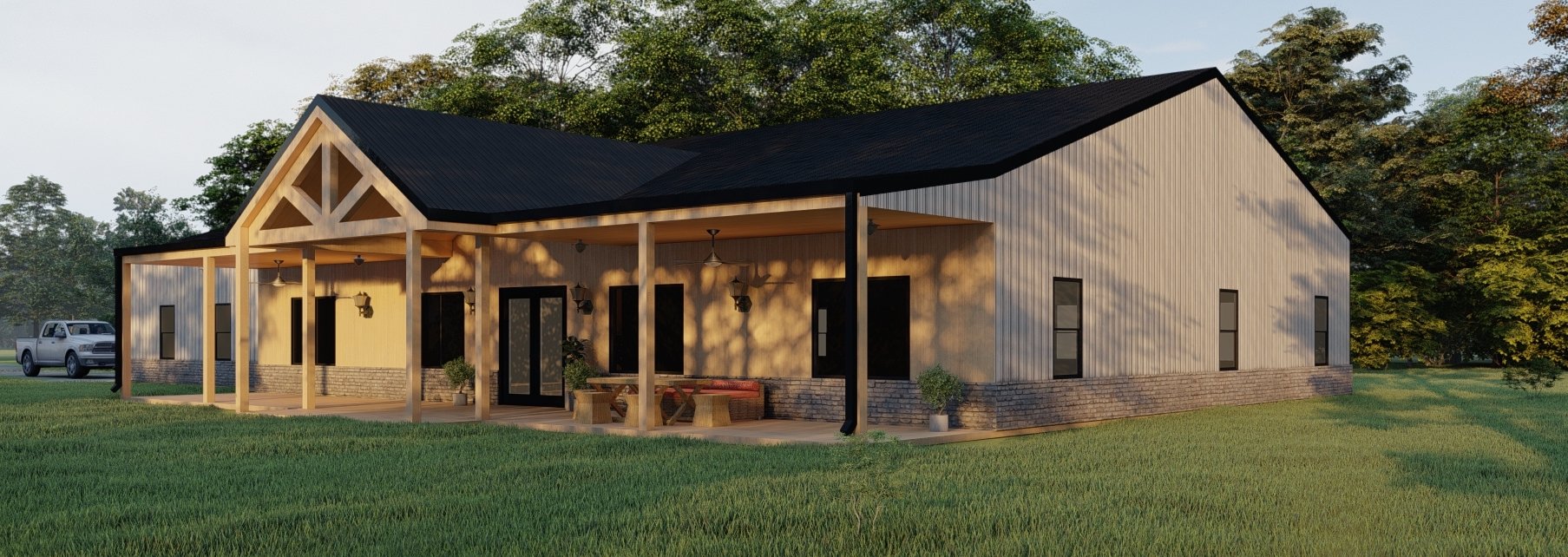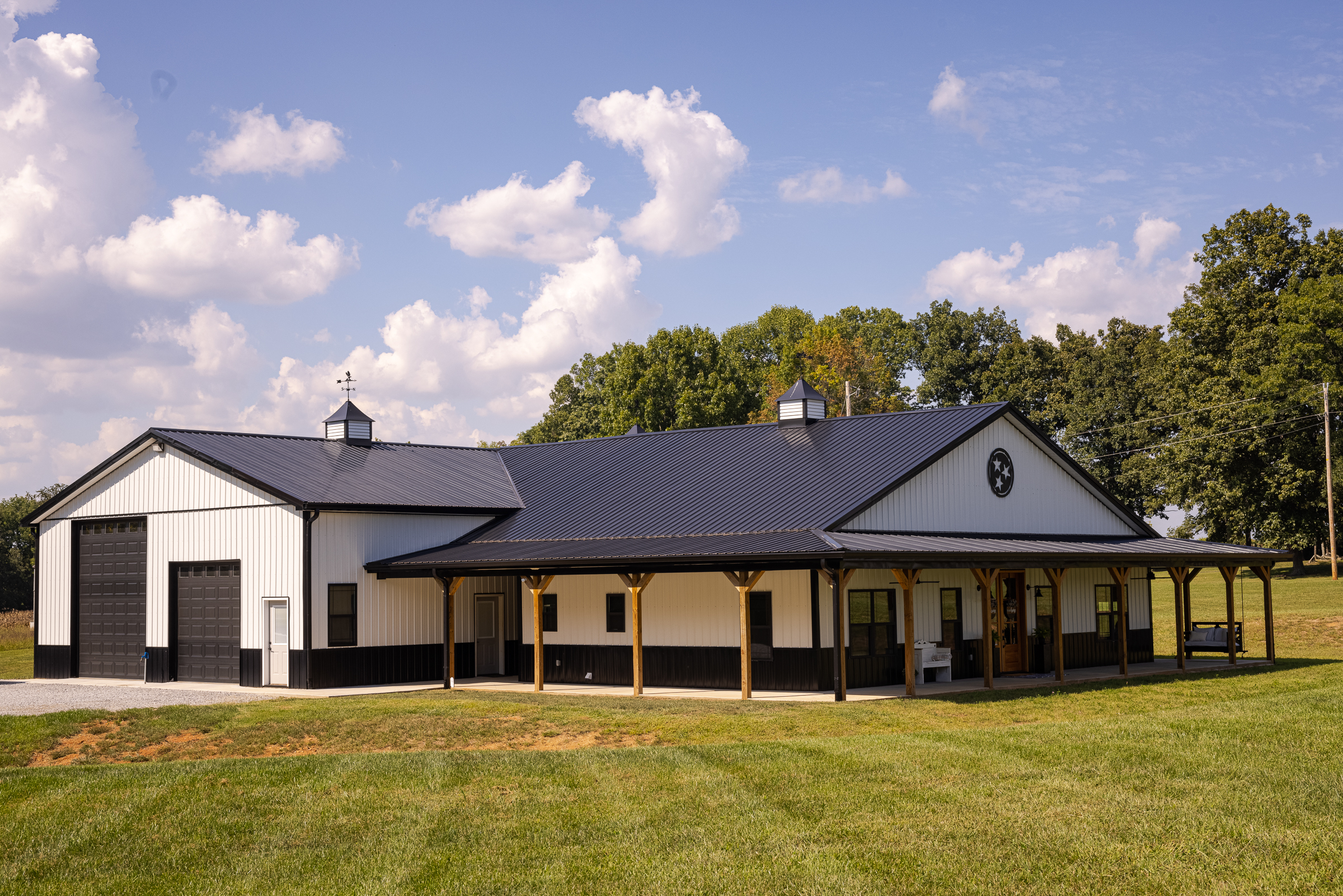Barndominiums Vs. Typical Homes: a Thorough Comparison of Way Of Life and Performance
The choice between barndominiums and traditional homes includes various aspects, including way of life preferences and practical needs. Barndominiums are defined by their open formats and versatility, often appealing to those who focus on communal living and convenience.
Summary of Barndominiums
Barndominiums, a novel housing trend gaining popularity across various areas, mix the rustic beauty of barn-style style with the capability of modern-day home. These unique structures typically are composed of a steel or timber structure, integrating open layout and high ceilings with energy-efficient functions. Frequently situated on expansive rural homes, barndominiums provide property owners the opportunity to enjoy a serene way of living while supplying adequate area for various tasks.
The adaptability of barndominiums prolongs beyond their visual charm; they can act as both living quarters and functional rooms for pastimes, workshops, and even small companies. Their adaptive design permits for simple personalization, accommodating varied family demands and choices. Numerous proprietors appreciate the reduced upkeep requirements related to metal siding and roof, adding to lasting sturdiness.

Attributes of Typical Homes
Emphasizing ageless layout and convenience, traditional homes are characterized by their unique building designs, which usually mirror historical influences and regional aesthetic appeals. Typical attributes consist of balanced exteriors, gabled roofs, and an emphasis on workmanship, causing a cozy and welcoming environment.
Typical homes frequently incorporate aspects such as crown molding, wainscoting, and hardwood flooring, enhancing their classic appeal. They generally feature multiple rooms with defined objectives, advertising family members communication while permitting for personal privacy. click here to view. The format typically consists of official living and dining areas, which contribute to amusing visitors and holding household events
Exterior materials such as brick, wood, or stone are regularly made use of, adding to longevity and a feeling of durability. Barndominium repair. Furthermore, lots of standard homes are created with front patios or stoops, promoting a sense of community and link with the area
Landscape design plays a considerable role in traditional home layout, with properly maintained yards and pathways that enhance aesthetic allure - see website. On the whole, typical homes personify a feeling of fond memories and stability, appealing to those who value heritage and an extra organized living atmosphere
Expense Comparison
Generally, a cost contrast in between barndominiums and conventional homes reveals significant distinctions in building and construction costs and overall financial investment. Barndominiums, usually built from metal or steel frames, commonly sustain lower product and labor expenses than conventional homes built from timber and brick. The streamlined style of barndominiums can translate to reduced building and construction times, even more decreasing labor prices and speeding up occupancy.
On standard, the cost per square foot for a barndominium varies from $100 to $150, while conventional homes can vary commonly, generally dropping between $150 and $300 per square foot, relying on place, products, and style complexity. This expense disparity makes barndominiums an eye-catching option for budget-conscious customers seeking bigger home without giving up quality.
In addition, barndominiums may cause long-term cost savings through lower upkeep costs, power performance, and insurance coverage prices. Their durable building and construction materials typically call for less maintenance with time compared to standard homes. It is necessary to take into consideration that while initial costs may be reduced for barndominiums, the last financial investment will certainly also depend on individual personalization and preferred services, which can affect the total expense in both housing types.
Lifestyle and Area Considerations
When thinking about way of life and area, barndominiums use an one-of-a-kind adaptability that interest a selection of homeowners. These hybrid structures combine residential living with functional space, often featuring open floor strategies that can be adjusted to match specific requirements. This versatility is especially beneficial for households or individuals seeking a personalized living setting, permitting varied uses such as home offices, workshops, or recreational locations.

In addition, the aesthetic allure of barndominiums can satisfy both rustic and modern preferences, making them a flexible selection for different layout preferences (Barndominium repair). Eventually, the selection between a barndominium and a typical home typically pivots on exactly how well each alternative aligns with the house owner's lifestyle ambitions and spatial needs, highlighting the significance of taking into consideration personal concerns in the decision-making procedure
Environmental Effect and Sustainability
The ecological impact and sustainability of barndominiums present engaging benefits contrasted to conventional homes. Mostly created from steel and other long lasting products, barndominiums are often developed utilizing recycled sources, reducing the demand for new products and decreasing waste. Their design generally highlights open rooms, which can bring about lower energy consumption for cooling and heating contrasted to typical homes with even more fractional layouts.
Moreover, barndominiums can integrate sustainable functions such as photovoltaic panels, rain harvesting systems, and progressed insulation methods, boosting their power performance. The convenience of their layout permits homeowners to integrate these technologies more seamlessly than in many conventional homes, which may require extensive retrofitting.
In addition, barndominiums commonly need fewer sources for construction due to their simpler, a lot more effective designs (see website). On the whole, barndominiums stand for a forward-thinking method to sustainable living, straightening with contemporary environmental top priorities.
Final Thought
In recap, the option in between barndominiums and conventional homes pivots on individual way of living preferences and practical needs. Barndominiums, with their open layouts and lasting products, cater to those looking for flexibility and common living.
Comments on “Economical Barndominium Builder: Produce Your Perfect Living Area”